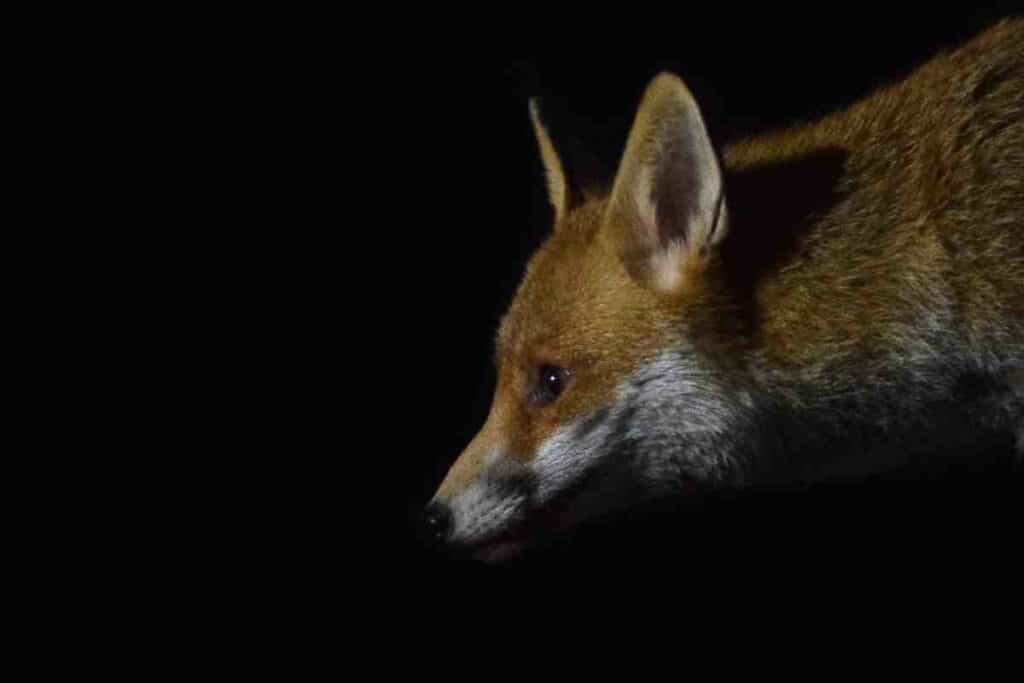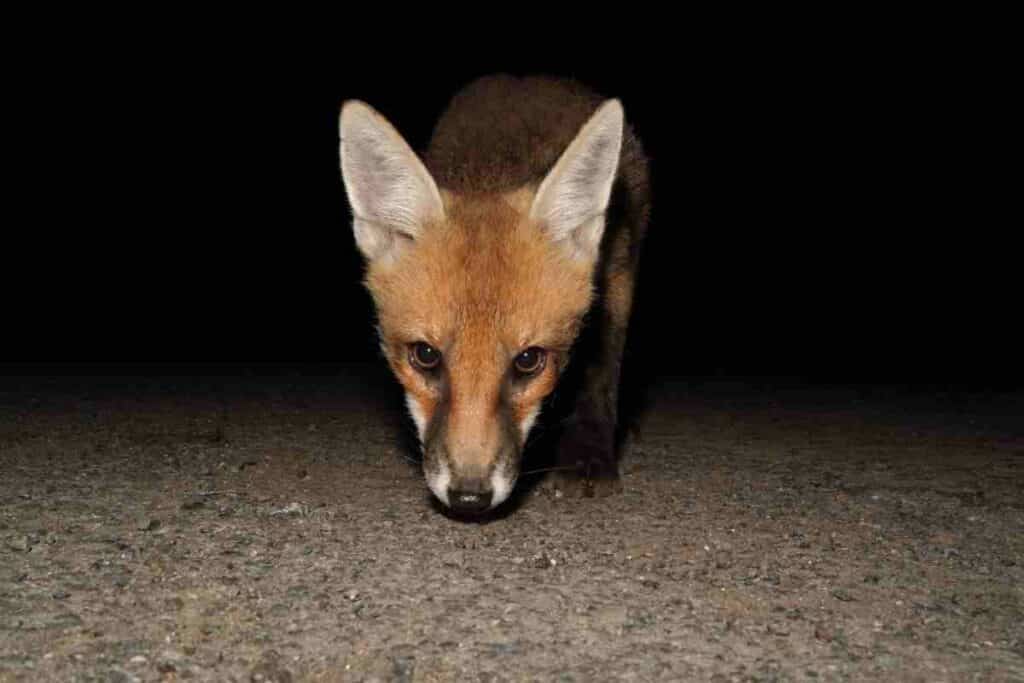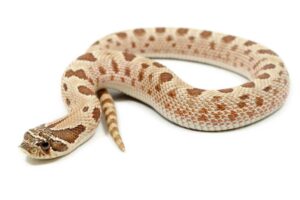Foxes are arrhythmic, which means they are active both day and night. However, they are known to be more active at night than day.
So yes, foxes can see in the dark due to the adaptive nature of their eyes. They have good eyesight since they have vertical slit pupils and wide eyes, which gather enough light for them to see in the darkness.
During the day, they are usually sleeping in their dens, though some can be crepuscular and hunt at dusk when the sun is setting.
Foxes primarily bark at night or twilight, meaning they are usually awake and active. It’s rare for you to see or hear a fox scream during the day, which is their means of communication.

Although they have other means of communication such as body language, the tail, ear and posture, and scent, for example marking their territories with urine.
Even though it is easier and best for them to hunt at night, this puts them in direct contact with larger predators that also hunt at night such as mountain lions. Mountain lions have been known to kill foxes to reduce competition for food.
Table of Contents
How Do the Eyes of a Fox Work?
Foxes are dichromatic, which means they are color blind and only pick a few colors with different contrasts. They are likely to pass stationary prey due to their low-resolution visual, making hunting small or immobile prey challenging.
Nonetheless, they use their excellent sense of hearing before launching their jump.
Pups are born blind and thus can’t see at night or day until they are mature enough to see.
Foxes are also very quick, they move fast and quickly through objects, scrubs, and bushes. This means they have good sight when things are closer, and when objects are far, they tend to see objects in contrasts and shapes.
Adaptations That Enable a Fox to See in the Darkness.
Foxes have bigger eyes with fewer cone cells than rod cells which enables enough flow of light to the retina to see clearly.
They also have Vertical slit pupils that have an advantage over round pupils. Vertical slits close more tightly than rounded ones, enabling the fox to adjust light hitting their eyes.
These vertical pupils also gather more light than rounded ones. When it gets dark, the iris widens, and the pupil dilates to allow more light to enter the eye.
The reflective tissue layer behind the retina glows in their eyes when artificial light falls on them. The reflective layer bounces light back and forth.
How Does Tapetum Lucidum Aid a Fox to See in the Darkness?
A tapetum lucidum is a retro-reflector tissue layer found in most vertebrates behind the retina. The tissue reflects light to the retina to provide enough light to the photoreceptors.
It also improves the level of night vision of the foxes by increasing the amount of light. The tissue enables the fox to see in dull light and causes an eyeshine when it falls to its pupil.
How Do the Eyes of a Fox Look in the Dark?
Common features to identify a fox in the dark are the color and the shape of the eyes, their eyelid, and the pupil slit. Probably, you might have seen a cat’s eye when light falls in its sights. The eyes tend to reflect a yellowish-green or red color like the fox’s eyes at night.
Foxes have vertical slit pupils, the color of their eyes is usually yellow, brown, or red, but when hit with artificial light, they tend to glow golden yellow unless it’s a red fox that shines red. Gray foxes are climbers, which is their adaptive nature of hiding from night predators.

If you spot a glow on a tree and the eye features match the mentioned above, then probably it’s a gray fox. The eyeshine results from the tapetum lucidum tissue, which improves their night vision for them to see in the dark.
What Are the Advantages of Darkness to Foxes?
Foxes prefer to hunt at night since their prey have poor vision during the night, giving them a tremendous advantage.
It is safer to hunt in the dark than during the day as some of their own predators are usually active during the day. Nonetheless, others such as mountain lions are active at night.
When other predators are active during the day, the competition is higher. Another predator can take the fox’s prey after a successful hunt, for example, the hyena. The fox can also act as prey to a bigger predator.
Due to the increase of the human population, people have started building in the fox’s habitat, increasing the chances of them living among human beings.
Urban foxes find it better at night since humans are mostly asleep.
However, sudden bright lights such as vehicle lights will definitely scare and chase the fox away; that’s why foxes prefer darkness.
Why Are Foxes More Active at Night Than in Daylight?
Foxes are usually asleep during the day in most cases, but it’s possible to see them in the daytime. It’s common to see them during the day when it is mating season, – mainly spring and winter, or when hunting is not too successful at night.
Despite darkness favoring them, some challenges affect them during the night. Foxes hunt alone, unlike other predators that hunt in groups.
During hunting, they can be subdued by other stronger predators. They also prefer night to avoid heat strokes.
Final Thoughts – Can Foxes See in the Dark?
Foxes are mostly nocturnal since their eyes are naturally adapted for night vision. This is through their big eyes, tapetum lucidum, and vertical pupil to collect enough light for them to see in the darkness.
You can identify a fox’s eye in the dark by its vertical slit pupil and the glow when light hits its eyes.
It is very rare to see a fox during the day since they don’t feel safe around daytime predators or humans. Foxes are commonly seen during the day if they are desperate for food or when it’s their mating season, probably winter or spring.











